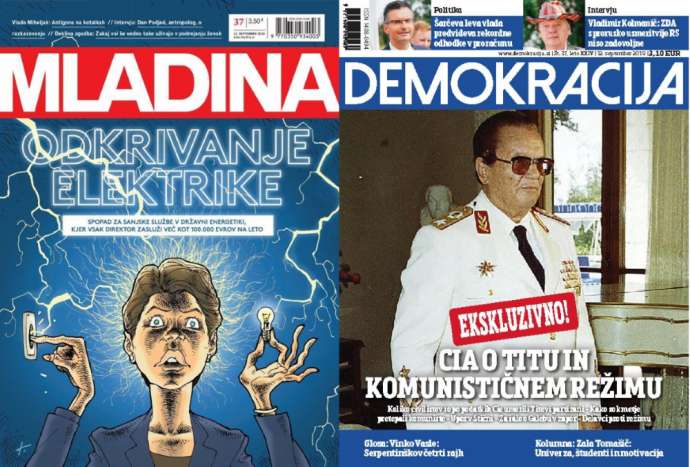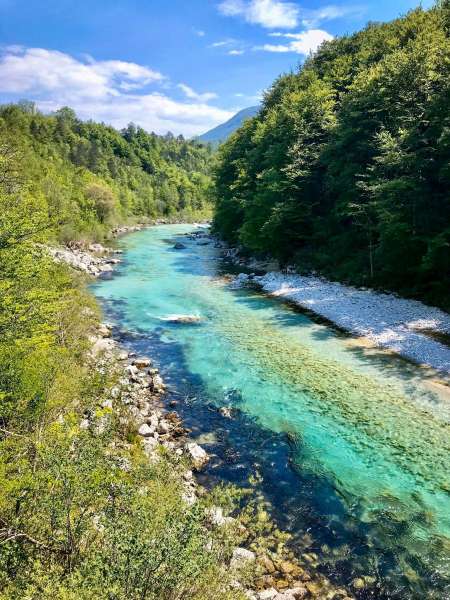The covers and editorials from leading weeklies of the Left and Right for the work-week ending Friday, 13 September
Mladina: Energy sector suffers from excessive pay
STA, 13 September 2019 - The left-wing weekly Mladina says in its latest commentary that the government does not want to make order in the energy sector and reduce the excessive wages there as the sector is highly politicised, with each political party having their piece of the pie.
"The world of energy in Slovenia is a distinctively political matter. The entire sector could be called a small political paradise," editor-in-chief Grega Repovž says under the headline EUR 100,000 a Month.
According to him, energy should be a competitive business in which the state does not and must not have any connection, because otherwise it does not function under the economic principles.
"It is supposed to be a serious business, with competition, market, large players, fierce fights for every consumer. But it is not. In reality, it is a completely state-owned system, but excluded enough from the state that the public sector rules do not apply to it."
At the same time, it is included in the state enough that politics can influence it. When it comes to distributing influence in the energy sector, political parties are able to make agreements and they cooperate well.
"There is a code of silence among parties and each new party which enters the government quickly gets its own 'energy district'," Repovž adds.
As energy companies in Slovenia are mainly public companies, it would be right if they get completely subordinated to the rules of public sector "in the field of wages for starts. Slovenia has one unusual feature: the highest wages are not paid out in the banking sector, but in energy."
However, Mladina does not believe that the current government has the courage or even the intention to do something about that. "It seems that a majority has already forgotten about their high-flying election promises," concludes the commentary.
Demokracija: Slovenia should learn from Estonia
STA, 12 September - The right-wing weekly Demokracija praises Estonia for its break with Communism, while Slovenia opted for a gradual transition and never really broke with the regime. "Communism was an occupation and Slovenia will not be able to step out of its shadow by ignoring its remnants. The snake needs to be decapitated or it will bring us down once more."
The weekly comments on Thursday on an interview Estonian President Kersti Kaljulaid gave the broadcaster TV Slovenija last week in which she specifically said that the country had been occupied by the Soviet Union and did not join the union willingly.
Slovenia and Estonia are similar in many ways, sharing similar fates after World War II. "Both had been occupied, in both countries the Communists first killed most of the bourgeois intelligentsia, industrials and entrepreneurs, and sent the rest to labour camps."
In both countries, power was in the hands of foreigners: in Slovenia in the hands of Serbs and in Estonia in the hands of Russians. They experienced Communist dictatorship and the countries stagnated for half a century.
But after the fall of the Berlin Wall and the independence of the two countries, their ways diverged. Slovenia opted for a gradual transition to market economy and never got rid of its socialist mindset, while Estonia broke off with Socialism overnight.
Slovenia could learn a lot from Estonia. The latter was a much poorer country when it became independent, but is now on Slovenia's tail, the paper says under the headline Why Estonia Became E-stonia.
The different mindsets were the most pronounced in the 2008 crisis, when Slovenia decided for Keynesian measures, while Estonia let the market sort itself out.
Although unemployment in Estonia was higher than in Slovenia during the crisis, the levels are similar now. But Estonia's debt amounts to only 8% of GDP, while Slovenia's is at over 70% of GDP.
All our posts in this series are here







